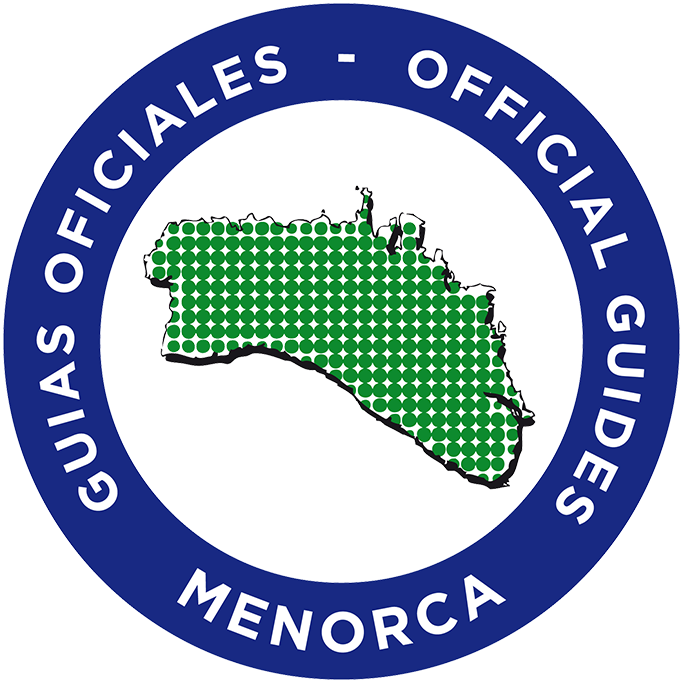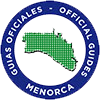Content
History
Due to its strategic position in the centre of the western Mediterranean basin, Menorca has been home to many different cultures, each of whom have left an exceptionally rich historical legacy.
The first settlers arrived at the end of the third millennium BC. The next 2,000 years sees the unfolding of several clearly distinct periods from the Bronze Age until, by the Iron Age, Menorca has become a unique culture with its very own personality, the talayotic.
Although influenced by the Carthaginians, it was the Romans, who conquered the island in 123 BC, that had a more lasting impact on Menorca. The ruins of the Roman settlement of Sanisera on the north coast make for a fascinating visit.
The Romans were defeated by the Vandals in AD 427 who gave way, in turn, to the Byzantine Empire. From about this time there are the remains of various paleochristian basilicas.
The Muslim domination of the island began in AD 903. Although It has left us with few monumental remains, its influence is to be found in numerous place names and in ingenuous irrigation systems.
In 1287 King Alfonso III of Aragon conquered Menorca from the Muslims. Shortly afterwards, under King James II of Mallorca, the civil and religious administration of Menorca was reorganized.
The following century marked the start of a period of intense constructive activity. The magnificent Cathedral of Santa María in Ciutadella was completed. The city walls of Mahon and a series of square defence towers also date to this time and are a reminder that Menorca continued to be frontier territory.
The conflict between the Ottoman Turks and Spain came to a peak in the 16th century. Mahon was sacked by the infamous pirate Redbeard and in 1558 a huge Turkish force, under the command of Mustafa Piali, overcoming heroic resistance, razed the capital Ciutadella to the ground and nearly 4000 islanders were taken captive to Constantinople.
1558 is known as “the year of the misfortune” and marked a turning point in the history of the island. The predominance of Ciutadella over the rest of the island began to decline and coastal defence became a priority.
In the 18th century, Menorca took centre stage in the power struggles between Spain, France and Britain. As a result it changed hands on several occasions though, in the end, it was the British that dominated control of the island. Notably under the governor Richard Kane, they undertook numerous reforms with extensive consequences in many areas of Menorcan life. Mahon was converted into the new capital and hence much of the city centre dates to this period.
This was also a period of economic growth which saw the emergence of a bourgeois class and the development of foreign contacts, both of which encouraged a blossoming of culture in all its expressions.
After a profound recession in the first half of the 19th century, Menorca slowly recovered with the introduction of industries and the construction of the fortress of Isabel II. In more recent times the island has managed to balance the development of tourism with the conservation of the environment.
Gastronomy
Despite being small, Menorca has a huge variety of high-quality gastronomic products that range from sea salt, honey and olive oil to Mahon chamomile and Menorcan saffron; from pies, pastries and cakes such as Menorcan ensaimada, to typical charcuterie or cheeses such as Mahon-Menorca cheese with its Protected Designation of Origin (PDO); from local wines to gins such as Menorcan gin with its Geographical Indication (GI) that has given birth to the popular drink of the Menorcan festivals: the pomada!
Traditional dishes include oliaigua, stuffed aubergines or courgettes, vegetable cocas, meatballs in almond sauce, arròs de la terra (made with ground wheat), partridge with cabbage, stuffed squid and, of course, the exquisite lobster stew, followed by desserts such as manjar blanco (blancmange), pudding (of English origin), gató (of French origin) besides cuscussó and Menorcan nougat (both of Arab origin). Nor can we forget sauces such as aioli and the famous mahonesa (mayonnaise) that originally comes from the city of Mahon.
Thanks to its authentic and creative gastronomy, the International Institute of Gastronomy, Culture, Arts and Tourism (IGCAT) has declared Menorca ‘European Region of Gastronomy 2022’, so the island is now a full member of the Platform of European Regions of Gastronomy, made up of 14 different territories.
Popular festivals
The traditional Menorcan patron saint festivities with their horses have their origin in the 14th century, with the obrerias or religious guilds that came down to the towns to raise funds for the artisan guilds. The members of these obrerias rode in on their horses when going to collect these taxes. Hence, the horsemen who form part of the main entourage in the festivals are known as caixers (cashiers), while the rest are called cavallers (horsemen).
Although the best known are those of Sant Joan (Saint John) in Ciutadella, these festivals are celebrated throughout the island usually in honour of the patron saint of each town. The traditional replec is formed, which is when the horsemen gather together before riding to the town square where, to the sound of a traditional piece of music (the jaleo) that arouses the euphoria of the multitude, the riders prompt the horses to rear up on their hind legs while the music lasts.
The main protagonist of these festivities is the Menorcan horse that is recognized as a breed in its own right and whose most striking characteristic is its completely black coat.
Other figures of the popular festivals in Menorca are the gigantes (giant figures) and cabezudos (‘big heads’), both handcrafted out of wood. These are paraded during festivals in all the towns of the island, except for Ciutadella. In Mahon they have a giant replica of s’avia Corema (the grandmother of Lent), that is dressed in a traditional way and has 7 feet which are removed one by one over the seven weeks of Lent, providing great entertainment for children.
CALENDAR
Calendar of the Patron Saint festivals of Menorca
Ciutadella – Saint John/Sant Joan – 23 and 24th of June
Es Mercadal – Saint Martin/Sant Martí – Third weekend of July
Fornells – Saint Antonio/Sant Antoní – Fourth weekend of July
Es Castell – Saint James/Sant Jaume – 24 and 25th of July
Es Migjorn Gran – Saint Cristopher/San Cristófol – Fifth weekend of July or first weekend of August
Llucmaçanes – Saint Cajetan/Sant Gaietà – First weekend of August
Alayor – Saint Laurence/San Llorenç – Second weekend of August
San Clemente – Saint Clement/San Climent –Third weekend of August
Ferrerías – Saint Bartholomew/Sant Bartomeu – 23, 24 and 25th of August
San Luis – Saint Louis/San Lluís – Last weekend of August
Mahón – Virgin of Grace/Mare de Déu de Gràcia – 7, 8 and 9th of September
Mercadal – Monte Toro (El Toro) – Saint Nicholas/San Nicolau – Second weekend of September
In addition to the best-known traditional festivals, there is a great diversity of activities, events and folkloric elements that have been transmitted from generation to generation.
All these traditions have been kept alive to this day: ball des còssil, glosats, particularities of the Menorcan language, joc de sa bolla, native artisan techniques, as well as religious beliefs and ceremonies, etc.
To better understand the aforementioned customs and to blend in with the local culture, we recommend that you go on a personalized visit with us.
Handicrafts
In Menorca there are, among others, the following local artisan crafts:
A) ARADER: Rural craftsman or carpenter specialized in making all kinds of tools and utensils necessary for different agricultural tasks.
B) ESPARTER: Esparto grass weaver who practises the art of making esparto baskets and senalles (baskets with handles).
C) AVARQUER: Cobbler specialized in making Menorcan rustic sandals (avarcas).
E) GERRER: Potter making jugs, pots and other baked clay objects.
F) MESTRE D’AIXA: Shore-based carpenter specializing in building and repairing llaüts (traditional Menorcan boats) and other wooden boats.
F) DRYSTONE WALL MASONS: Specializing in the building of drystone walls, cattle shelters and other rural constructions using the drystone technique.

